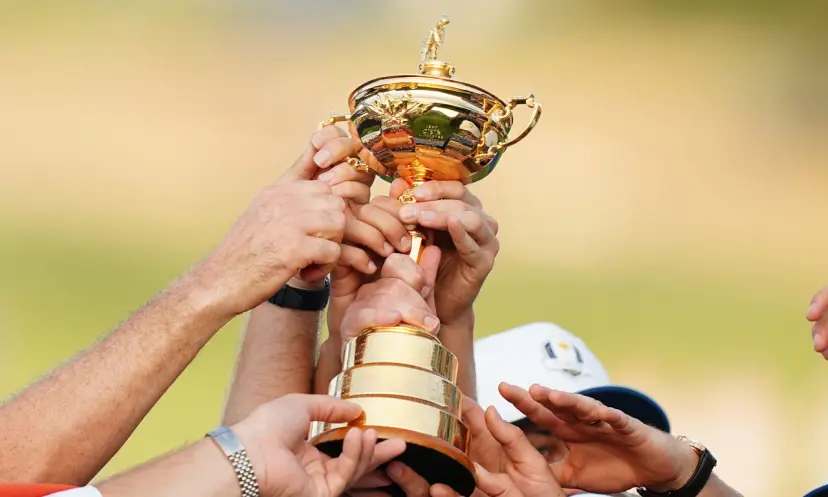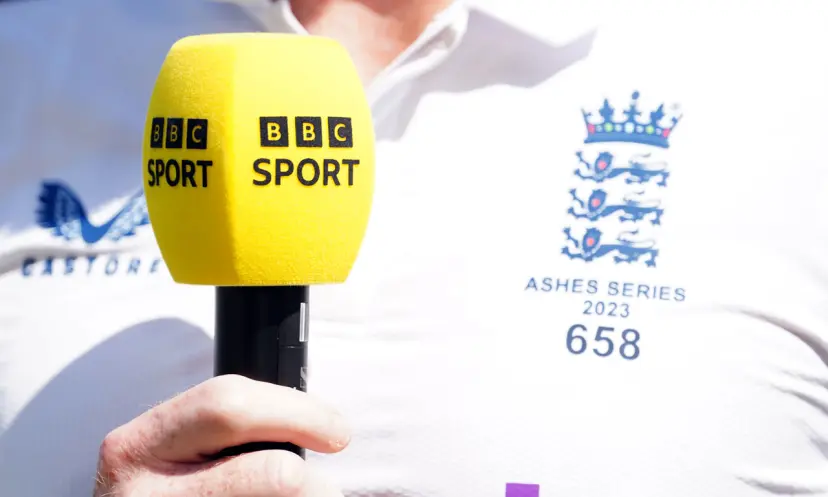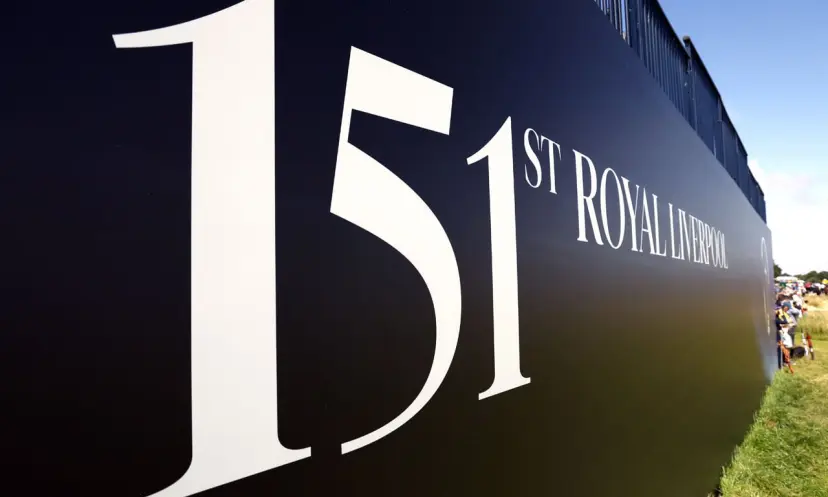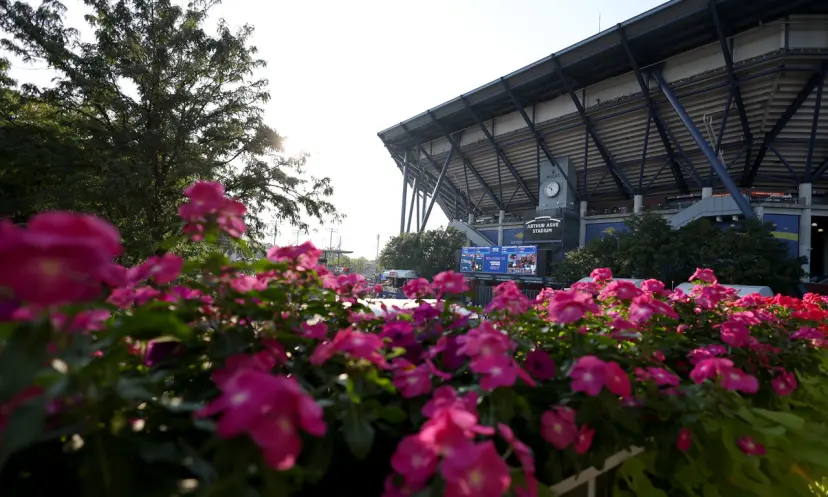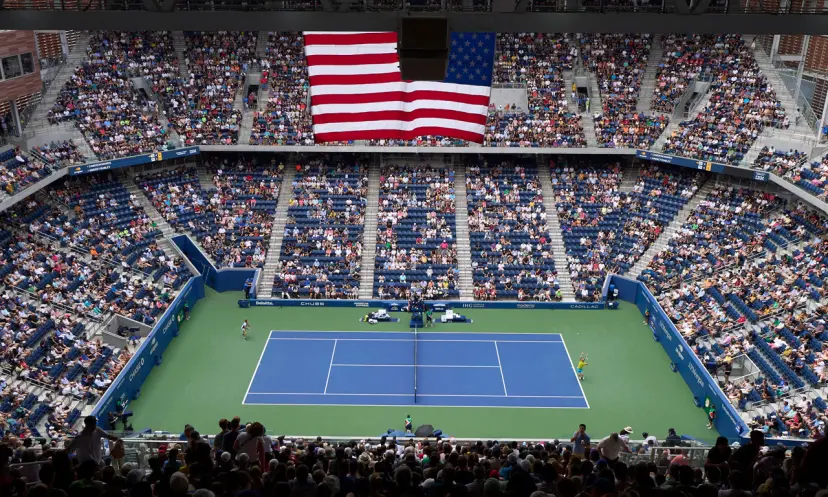Wimbledon numbers: Which seeds are vulnerable?
Published: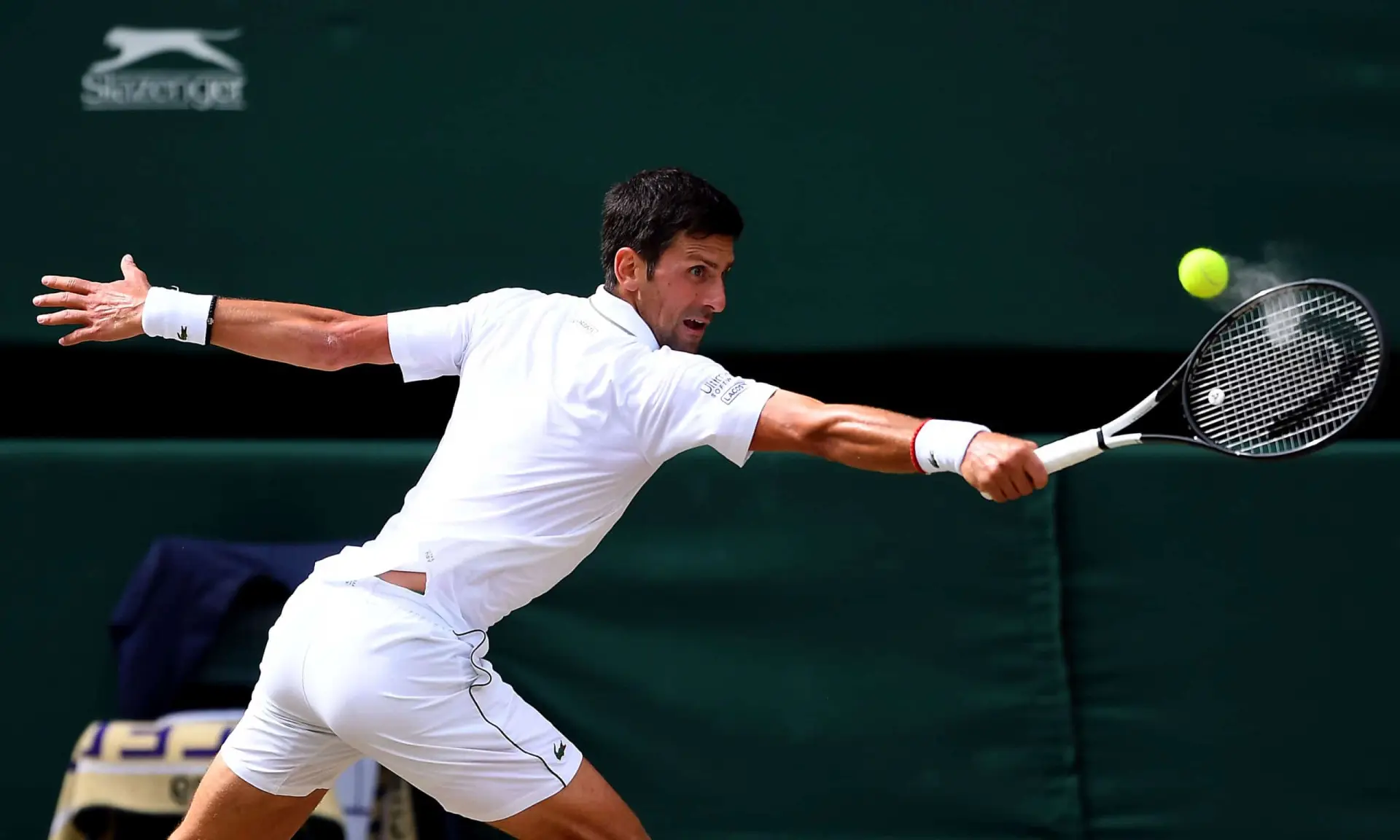
Wimbledon was cancelled in 2020 due to the coronavirus pandemic, making it the only one of the four tennis grand slams which was not contested last year.
However, fans will be returning to SW19 at the end of June and we’ve taken a look at the Wimbledon numbers behind the tournament to see what they can expect.
How important is seeding at Wimbledon?
For the first time in the history of the men’s singles, the seeding will be based entirely on world rankings.
Previously, more weighting was given to performance in grass-court events but the All England Lawn Tennis and Croquet Club have finally decided to fall in line with other majors.
This may well dilute the accuracy of the seeding, which has been a reliable predictor of success in the men’s singles.
Since the 32-seed structure was introduced in 2001, 60% of finalists (23 out of 38) have been one of that year’s top two seeds.
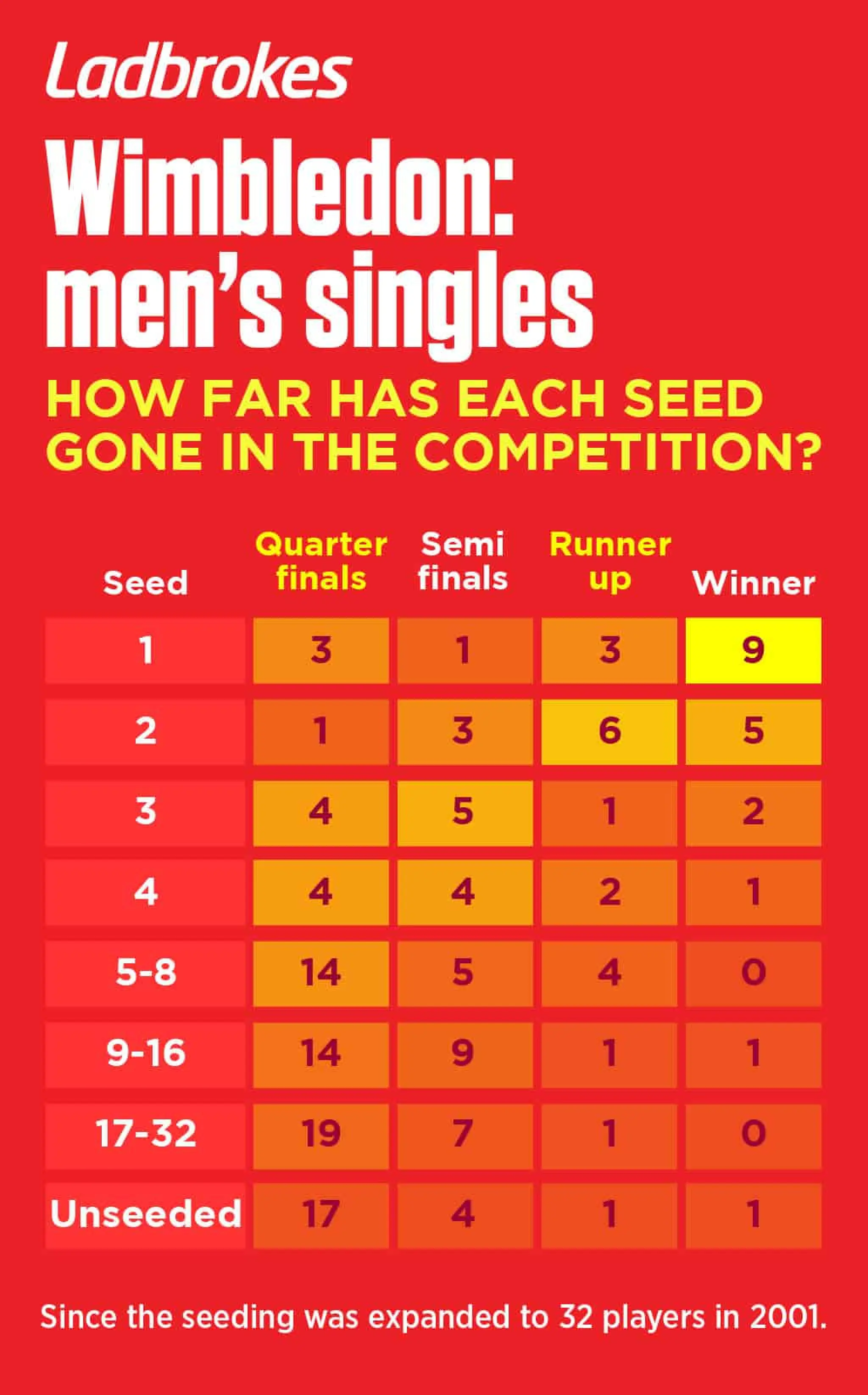
Furthermore, 14 of those 19 finals were won by either the first or second seed, with only two tournaments in that time being won by someone seeded lower than fourth.
Seeding has had much less of an influence over the women’s singles at Wimbledon, which tends to see more surprises.
The top two seeds have reached fewer than 30% of finals (11 out of 38) between them over the same 19-year period.
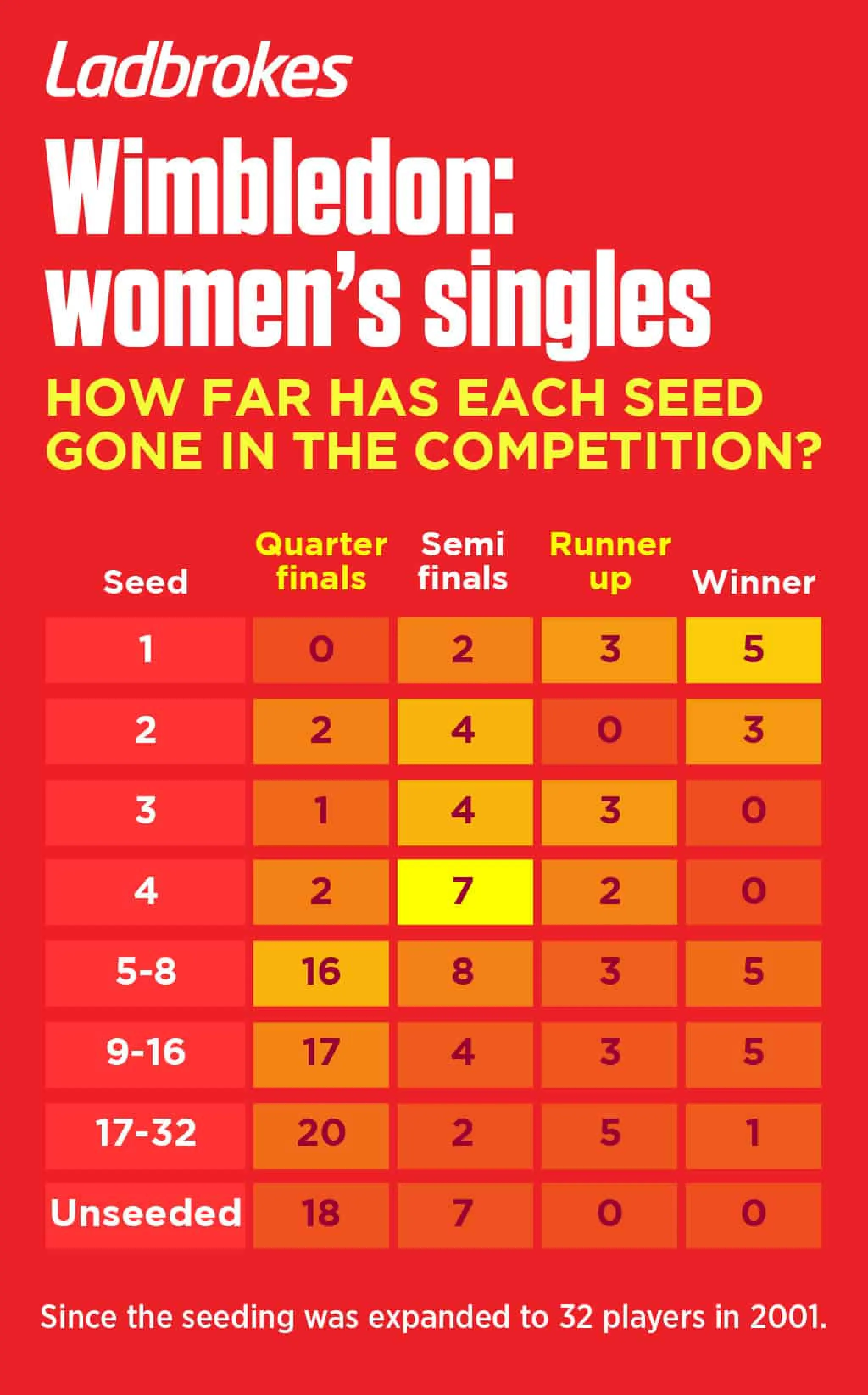
Only eight of the last 19 winners were one of the top two seeds while more than half were ranked outside the top four at the start of the tournament.
Which round sees the most upsets at Wimbledon?
In men’s singles matches where a seed is drawn against either a lower-ranked player or an unseeded opponent, the third round witnesses the highest proportion of upsets.
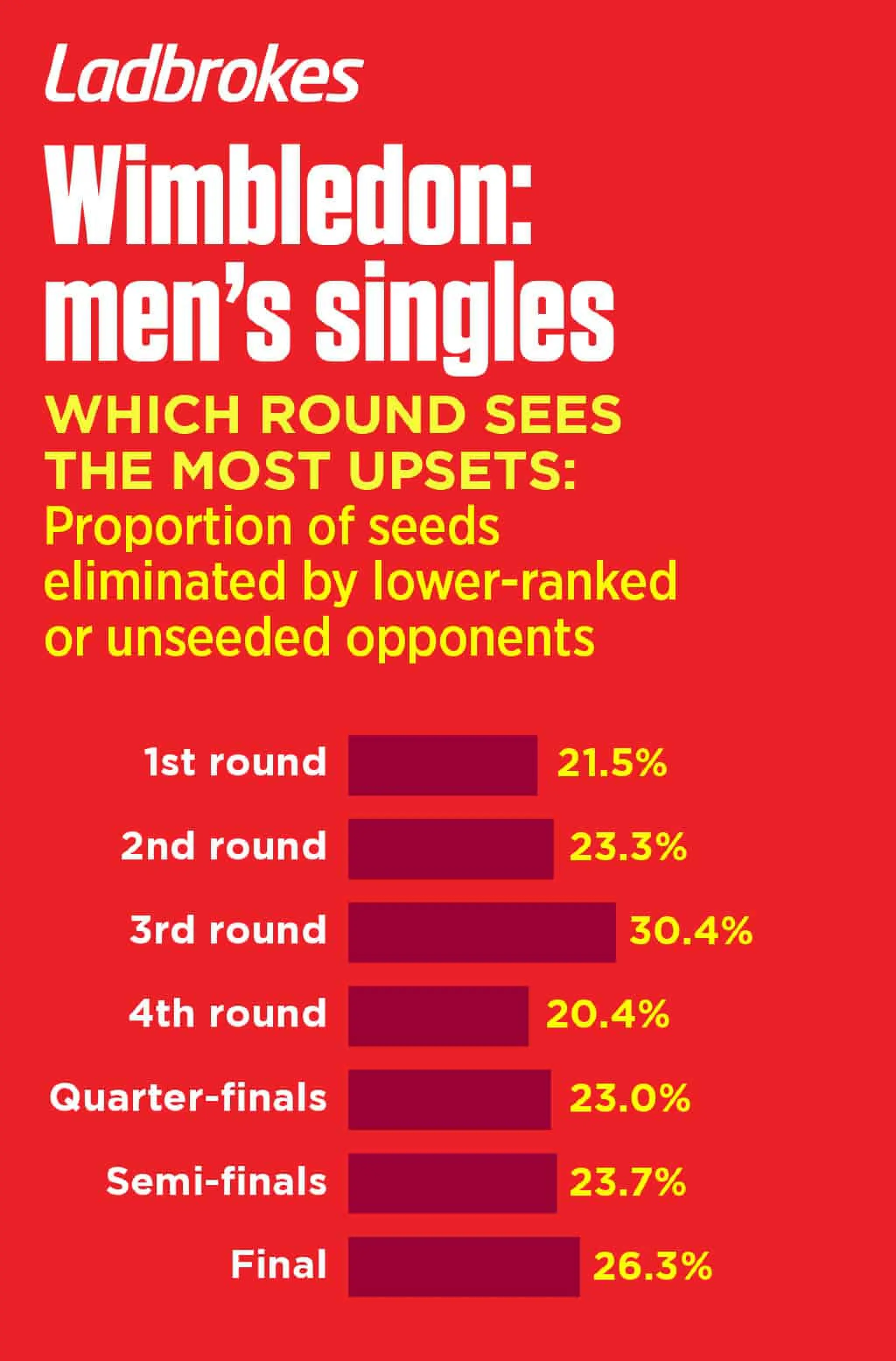
More than three matches in every 10 at this stage sees the favourite eliminated, and this seems to serve as a wake-up call for the remaining seeds.
The following round – the fourth – has witnessed the fewest share of similar upsets, with just over one in five matches not following the script.
In the women’s competition, the latter stages are where you should expect to see an underdog prevail.
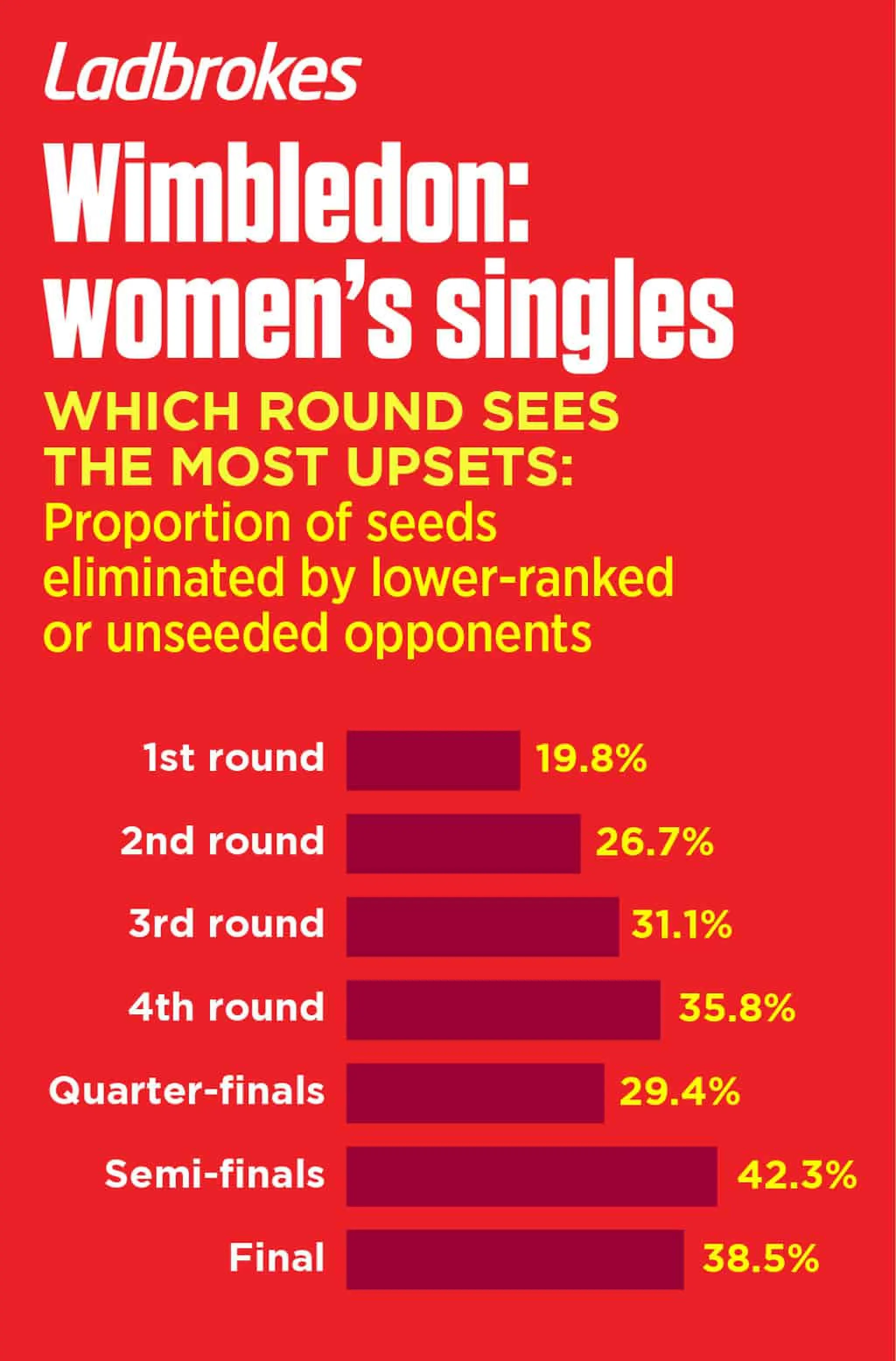
The round with the largest proportion of upsets has been the semi-final, which has seen over 42% of matches end in defeat for the higher-seeded player, closely followed by the final itself with nearly 39%.
Which seeds have been vulnerable to upsets?
Unseeded players will be understandably nervous if they are drawn against the top seed. In the men’s singles, the top-ranked player has prevailed against all but one of their 55 unseeded opponents since 2001.
Their sole collective defeat came when Ivo Karlovic – ranked 203 in the world – beat Lleyton Hewitt in 2003 to become the first man in the Open Era to eliminate the defending champion in the first round.
However, there are some seeds who have tended to be easier prey in recent years. The 29th seed is the only one of the 32 to have won fewer than half of their matches against unseeded opposition.
Higher up the food chain, 14th seeds have also endured an unusually poor record, with 14 of the 18 lower-ranked men performing better against unseeded opposition.
In the women’s singles, the number four seed has actually been more effective at dealing with unseeded opponents than anybody else, so expect few upsets on their route through the competition.
Unseeded women should fancy their chances against the 22nd seed though, as they have fared worse than nine of the 10 lower-ranked players in this regard.
Does age matter at Wimbledon?
In recent years experience has counted for more than youth in both singles tournaments at Wimbledon.
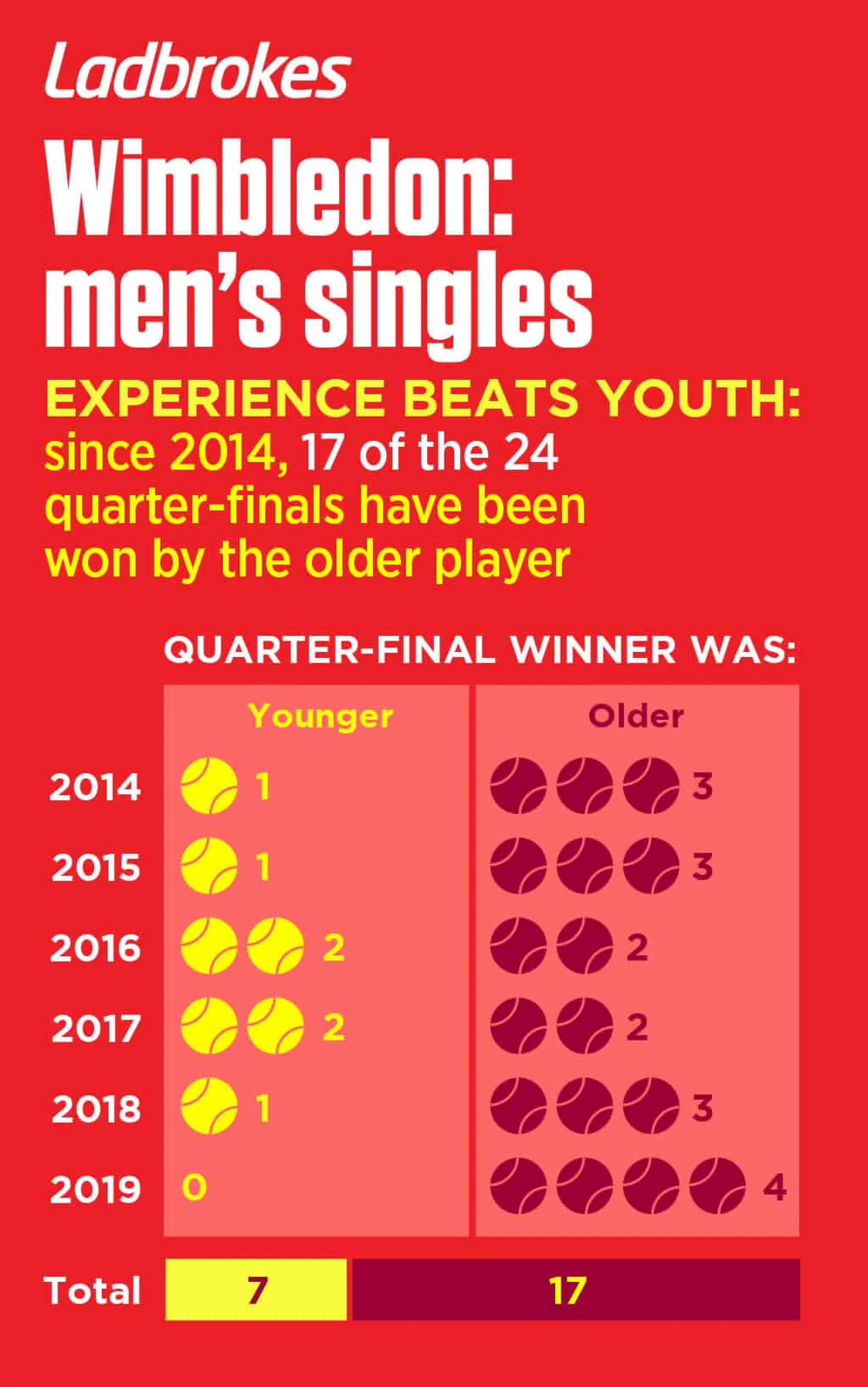
When it was last staged in 2019, all four men’s quarter-finals were won by the older player. This continued a six-year trend which has seen the younger man eliminated in 71% of matches at this stage.
It is tempting to ascribe this to the ageing ‘big four’: Novak Djokovic, Roger Federer, Rafael Nadal and Andy Murray have continued to dominate grand slams well into their thirties.
However, the proportion of quarter-finals won by the older player is even higher in the women’s competition.
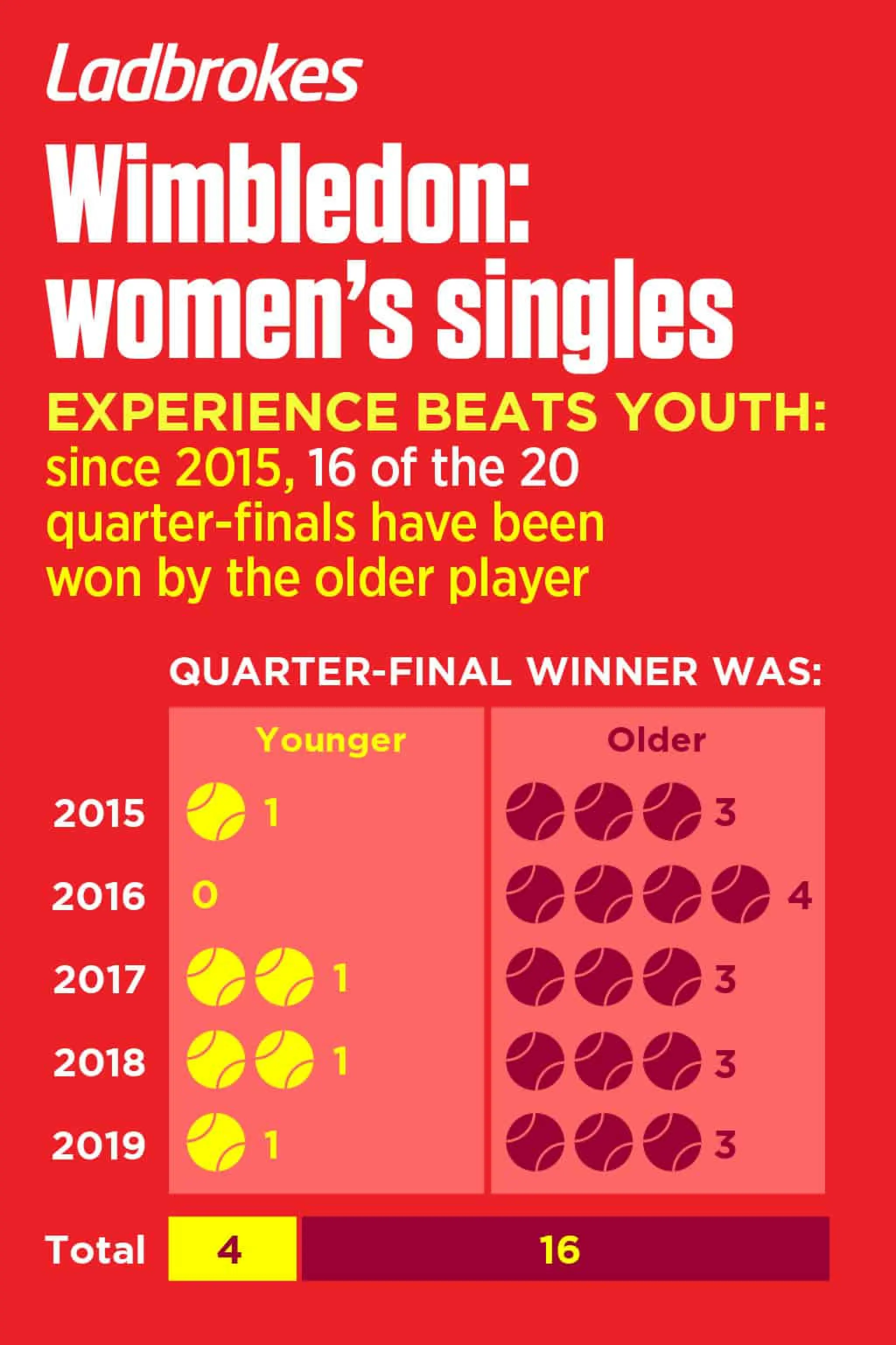
Since 2015, only four of the 20 quarter-finals in the women’s singles at Wimbledon have seen the younger player progress.
In each of those five tournaments, at least three of the semi-finalists defeated a junior opponent to reach the final four, suggesting that youthful energy will only get you so far in a grand slam.
Will British players do well at Wimbledon?
Unfortunately for the home crowd, there is not much hope of the winner of either singles tournament being draped in a Union Flag.
There are 128 players in the first round of a grand slam tournament such as Wimbledon, but Great Britain has only four men in the top 128 of the ATP Rankings.
The lowest ranked of these is Andy Murray, who is still fighting to be fit for the competition.
If the world rankings were a perfect predictor of grand slam success then even reaching the fourth round would be a tall order for a British man this year.
At this stage of the tournament there are 16 players remaining, but the highest-ranked male British player is Daniel Evans in 25th.
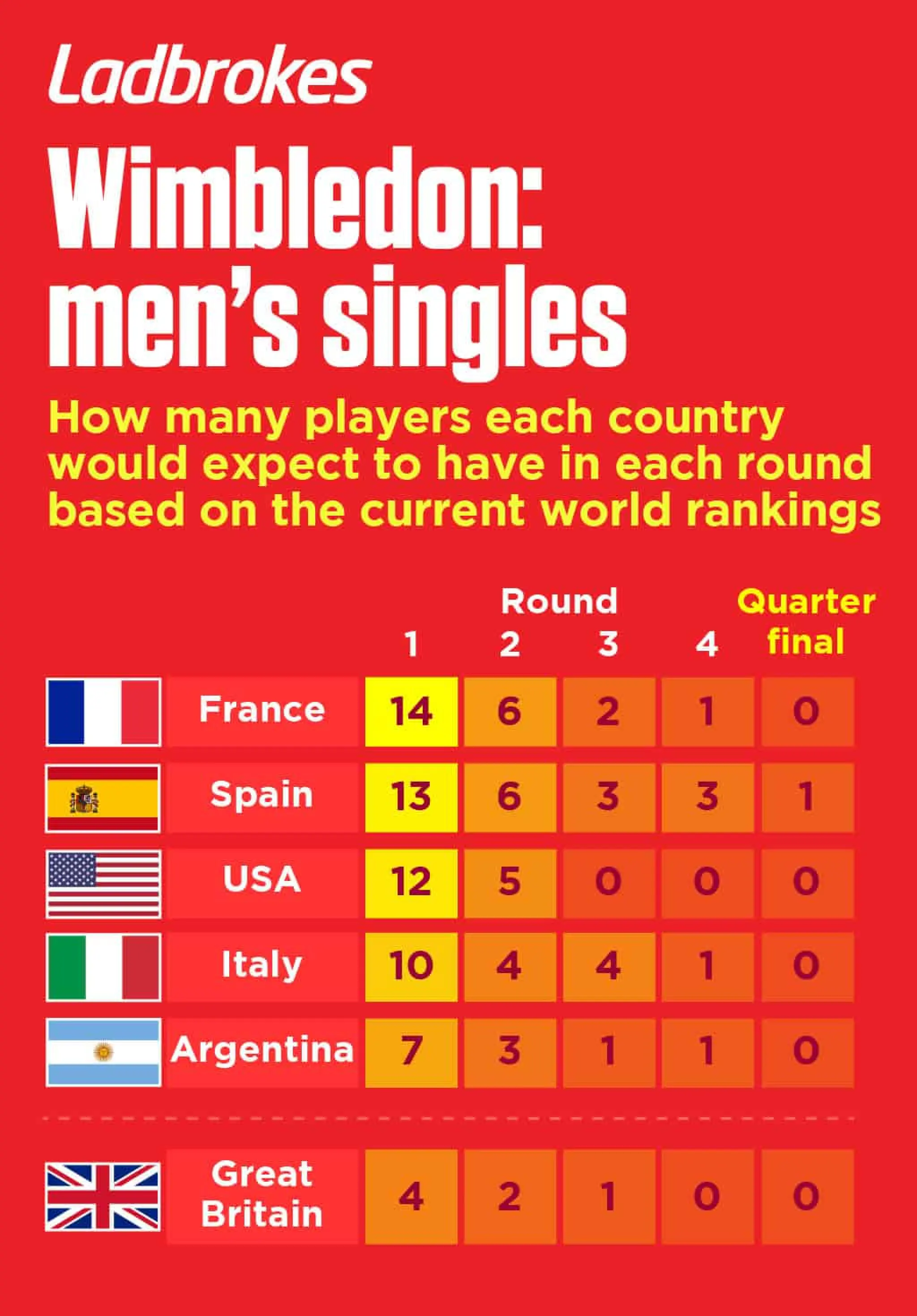
In comparison there are three countries – France, Spain and the United States – who have at least three times as many players in the top 128, and eight who can boast a representative in the top 16.
Cameron Norrie has reached the third round in each of the last three grand slams but he has yet to venture past that point even in Masters 1000 events.
Kyle Edmund has a solitary grand slam semi-final appearance to his name but that was back in 2018 and like Murray he is not in peak physical condition.
There are even fewer British women currently among the top 128 in the WTA rankings: just two in fact.
Johanna Konta is ranked 30th in the world and Heather Watson 70th, so a few upsets would be required for either to reach the latter stages of the tournament.
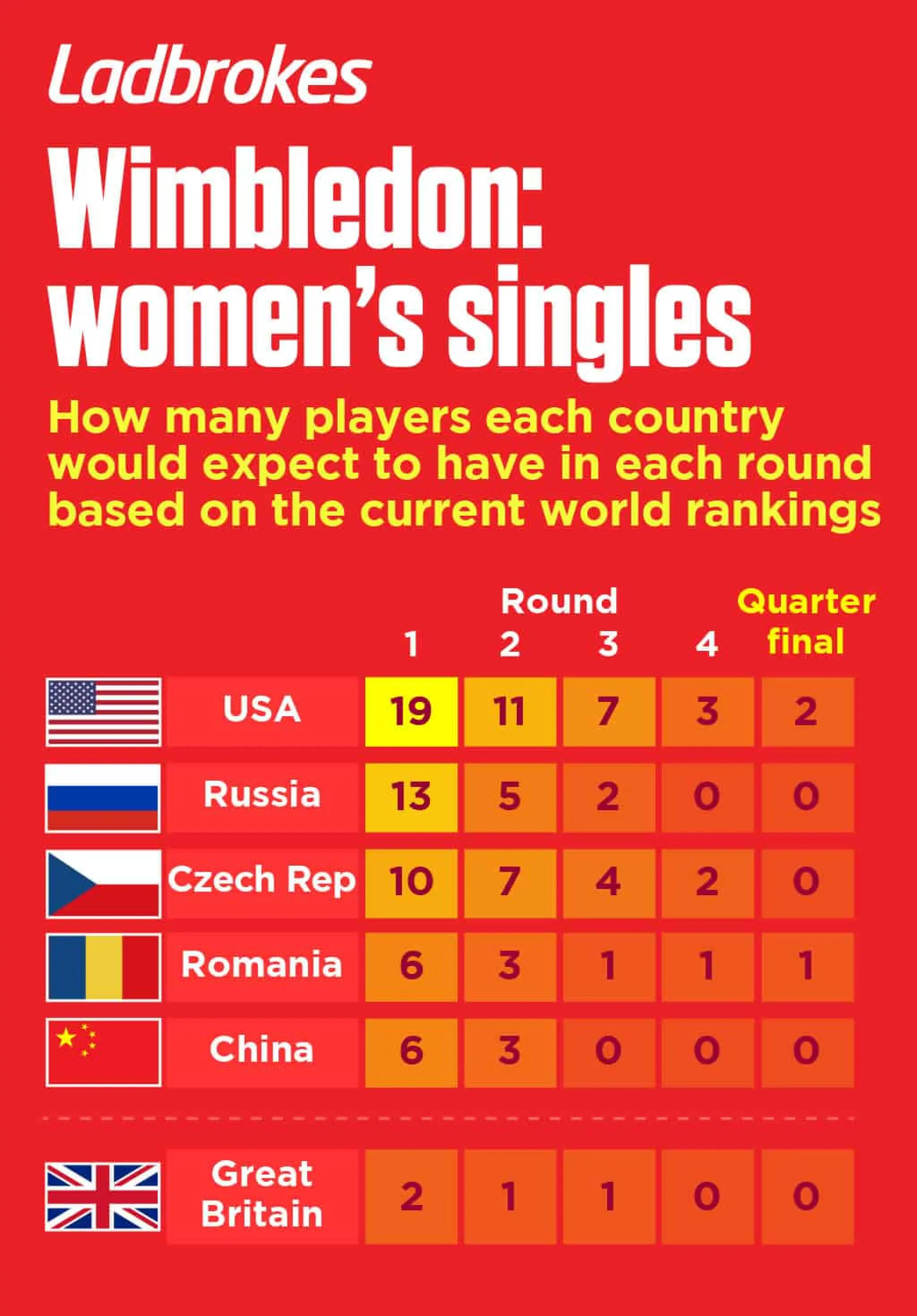
Dan Evans and Konta are the only Brits – other than Murray – to have won titles.
Konta recently won her first title in four years at the Nottingham Open and she has also made it to three grand slam semi-finals so is probably the best hope for British success this year.
Wimbledon Info
When: 28th June-11th July
How to watch: BBC 1

